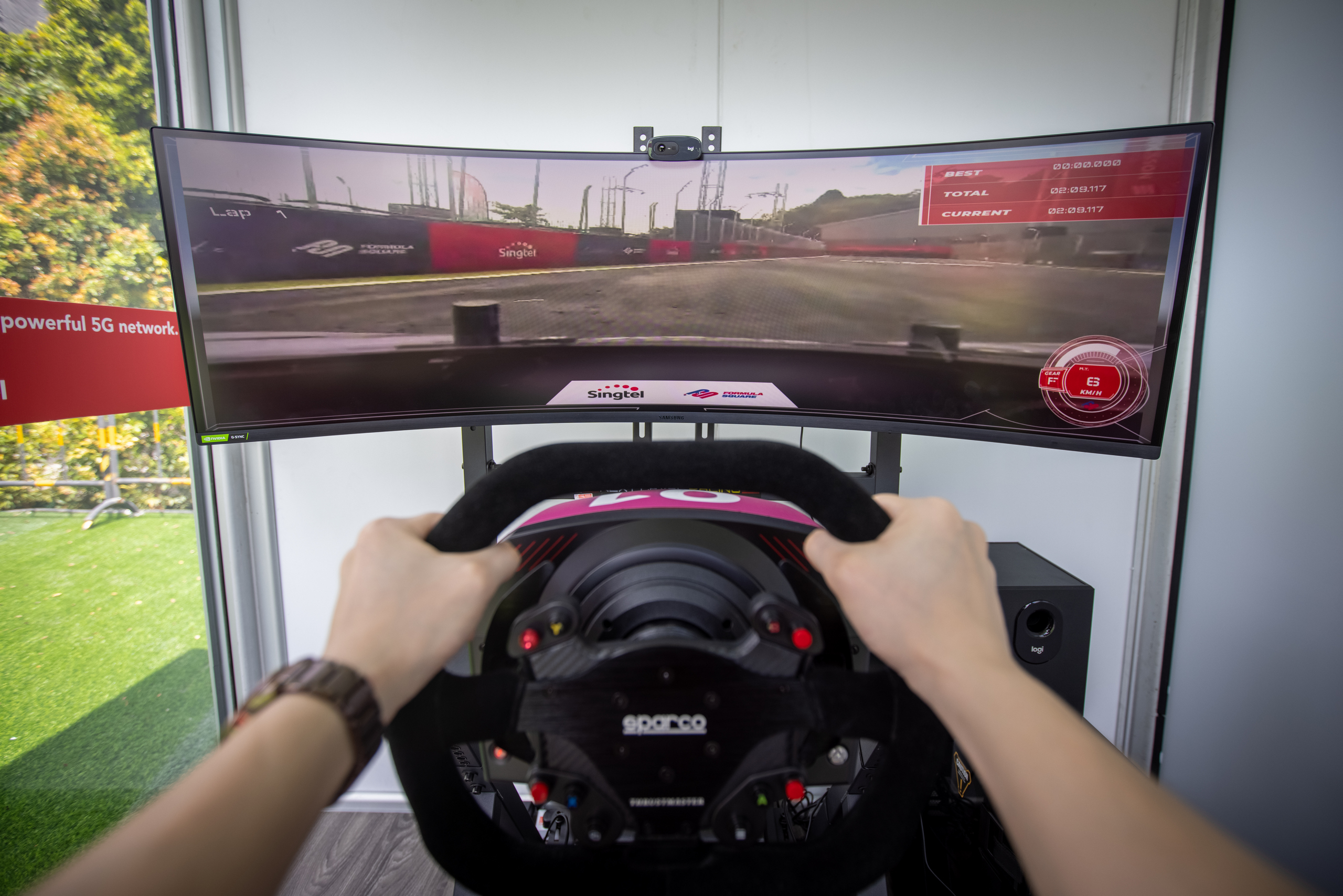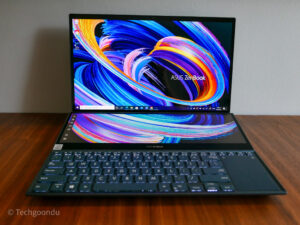
At a Singel 5G demo at Sentosa, a user can drive a remote car (right) with a steering wheel and large screen. PHOTOS: Handout 
Singtel has expanded its 5G coverage to two-thirds of Singapore, as it seeks new uses for the emerging mobile technology in the year ahead.
The coverage, measured in terms of the Republic’s postal codes, does not include many indoor areas but the largest telecom operator in the country can at least put itself forward as a leader in the race to provide islandwide coverage here.
That coverage is for the non-standalone version of 5G, revealed Dr Anna Yip, chief executive officer for Consumer Singapore at Singtel, who added that the more advanced standalone version now blankets half of the country.
Speaking at an event today to show off new 5G applications, she said there were 180,000 Singtel 5G subscribers in Singapore so far, despite the network not yet offering full coverage.
Singtel and a StarHub-M1 joint venture won two nationwide 5G licences last year and have to connect up half of Singapore by end-2022 and blanket the entire country by end-2025. Both now seem to be ahead of the rather generous schedule set by the government regulator.
Among the new applications that Singtel said would be important to drive 5G adoption are edge computing solutions that it is putting together for businesses, which can take advantage of the low latency offered by 5G Standalone networks.
With 5G, the machinery at a sea port can now be remotely controlled and drones can help deliver items in future, as Minister for Communications and Information, Josephine Teo, told the media at the event.
Other businesses have also taken to 5G to connect their smart sensors in a factory or, as an M1 demo showed last week, to hook up robots and surveillance cameras to monitor a location.
What about consumers, then? What’s in it for a user who is happy with existing 4G plans, which offer generous data bundles for around S$20 a month, which is a fraction of 5G prices?
Interestingly, Dr Yip revealed that music and video streaming were among the commonly used apps by its 5G users today. Singtel also touted a partnership with Zoom and Samsung today to connect up users for video calls easily.
But can’t these already be carried out now on 4G? Yuen Kuan Moon, Singtel’s group CEO, said it is true that many new consumers applications may yet emerge in the future, just like the experimentation that happened in the early stages of 3G and 4G.
One potential opportunity is gaming, which requires low latency, he noted. Another could be connecting the increasing numbers of Internet of Things (IoT) devices at home, he added.
Eventually, he argued, users will evolve as they find that they have a better connection and find new uses for that. “New use cases will come.”






